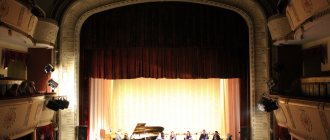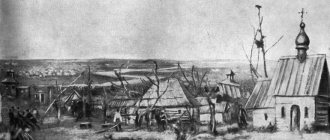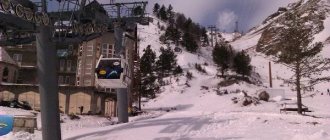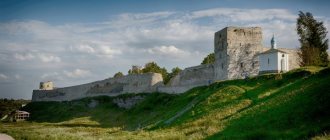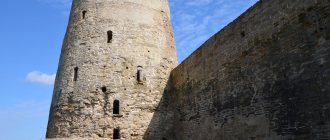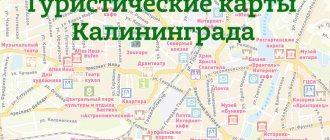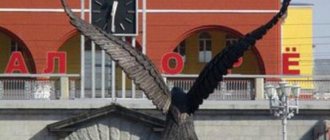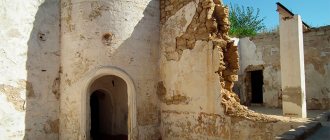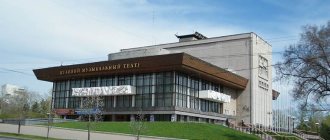Zaragoza is a city in north-eastern Spain, which is located on the banks of the Ebro River and is the capital of the autonomous region of Aragon. Zaragoza is the fifth largest city in Spain and has a rich, centuries-old history. We offer you a selection of the best attractions of Zaragoza with photos and descriptions that will help you not to miss the most important tourist spots in the city.
In the 1st century BC, during the colonization of the Iberian Peninsula, a new settlement was founded by the Romans on the site of present-day Zaragoza. It was called Colonia Caesaraugusta or Colony of Emperor Caesar Augustus. This is where the modern name of the city comes from. By the way, among the attractions of Zaragoza there are also ancient Roman monuments. In 712-713, Zaragoza was conquered by the Arabs and was recaptured by the Spaniards only in 1118 during the Reconquista.
City of Zaragoza (Spain)
Zaragoza is a city in northeastern Spain, the capital of the Aragon region and the province of the same name. Situated on the Ebro River in the center of a wide valley. Zaragoza is a treasure trove of historical and cultural treasures that are truly worth seeing: ancient Roman ruins, majestic ancient churches, beautiful Mudejar palaces and museums with masterpieces by Francisco Goya, Serrano and Pablo Gargallo.
Zaragoza is a charming, warm city conveniently located between Madrid, Barcelona, Bilbao, Valencia and Toulouse. It is one of the largest cities in Spain in terms of population and economy. Zaragoza beckons with its rich culture, shopping, delicious food and ancient sites. It is a city with 2,000 years of history that preserves one of the greatest historical and artistic heritages on the Iberian Peninsula.
Useful tips for tourists
As in any country, Spain has local customs and peculiarities that it doesn’t hurt to study when going on a trip. This will allow you to better understand the country and make your vacation more enjoyable and comfortable. Here's what visitors to Zaragoza need to know:
- The most popular and cheapest form of transport in Zaragoza is the bus. There are 47 routes in the city, and seven of them operate at night;
- The Zaragoza Card will help you save on transport and visiting museums. It allows you to explore city attractions and ride public transport for free;
- You can get around the city by bicycle by renting one at one of the many points. There are dedicated paths for cyclists throughout the city;
- There are no free parking spaces in the city center. Keep this in mind if you are traveling by car;
- in Zaragoza in summer the siesta lasts from 13:00 to 17:00. Most stores close at this time, so it is better to go shopping in the morning or evening;
- the hot climate left its mark on the character and habits of the Zaragoza people. They are not in a hurry and are not too punctual. Being late even for a business meeting is considered normal;
- touching during a conversation is not considered familiarity - it is simply a manifestation of acceptance and friendship (this also applies to traditional kisses upon meeting);
- in Zaragoza you should definitely try the local wine, cheese, jamon and candied fruits in chocolate - you will definitely want to take them with you when leaving;
- The city has a very active nightlife - bars and clubs do not close until the morning.
Geography and climate
Zaragoza is located in the middle reaches of the Ebro, about 300 km from the capital of Spain, Madrid. The Huerva and Gallego rivers also flow through the city. The average altitude above sea level is about 200 m. Zaragoza has a cold, semi-arid climate. Winters here are quite cool with frequent light frosts. Summer is dry and hot. There is very little precipitation per year - about 400 mm, most of which falls in April-May and October-November.
Panorama of Zaragoza
A stone bridge
The deepest river in Spain, the Ebro, has a very capricious character. This can be seen even on the map - its source is located a few kilometers from the Atlantic Ocean, but the Ebro flows not in the immediate direction, but through the entire peninsula, into the Mediterranean Sea. The length of the river makes spills and floods unpredictable - rain can fall in the Logroño area, and bridges can be demolished in Zaragoza.
Bridges in the city were built by trial and error. They were constantly carried away by the daring river, but people built crossings again and again. In the 15th century, the problem seemed to be solved - a major stone bridge was built. But in 1643, a flood simply washed away the two central spans. The bridge was restored only 16 years later. Then the banks around it were strengthened, the cutwaters at the base of the bridge were expanded, and in this form it connects the banks of the Ebro to this day.
In 1991, a pair of lions were placed at the ends of the bridge, and they are trying to call the bridge the Lion Bridge, but the townspeople, in the old fashioned way, call it the Stone Bridge.
Story
Zaragoza was founded by the Romans, who named the settlement Colonia Caesaraugusta. The name means "Colony of Emperor Augustus". At first, veterans of the Cantabrian wars settled here. Zaragoza soon became the most important urban center of the middle Ebro Valley. In 380, a general Christian synod took place here.
At the beginning of the 8th century, Zaragoza was conquered by the Arabs. From that time on, the city was part of the Caliphate of Cordoba and was an important Moorish stronghold in the fight against the Spanish kings. After the collapse of the Cordoba Caliphate, Zaragoza became the center of an independent Moorish state. In 1118 the city was conquered by the king of Aragon and Navarre and became the capital of the kingdom.
Ebro River
In the 15th century, after the unification of Spain, Zaragoza lost its importance, while remaining one of the most important and largest cities in the northeast. During the Napoleonic Wars the city became famous for its heroic defense against the French. In the 20th century, Zaragoza's economy began to develop rapidly thanks to industrialization.
Features of local cuisine
Local cuisine mainly consists of meat dishes, but fish and seafood dishes can also be ordered in any restaurant. The most popular and revered local dish is milk lamb, which simply melts in your mouth. Tronchon cheese is considered very popular both among the local population and among foreign tourists.
It is also recommended to treat yourself to the following delicacies: jamon from Teruel, pork ribs and mountain rabbit. Among the desserts, custard rolls and hot chocolate are especially popular. The most popular wines are Borja, Somontano and Cariñena.
How to get there
Zaragoza Airport is located 10 km from the city center. In 2008, a new terminal was built. Airplanes from Alicante, Brussels, London, Rome, Paris, Frankfurt and other cities in Spain and Europe arrive at this air port. You can get from the airport to the city by bus, train and taxi.
High-speed trains from Barcelona and Madrid run regularly to Zaragoza. Regular trains connect the city with Bilbao and Valencia. There are regular bus services to major cities in north-eastern and central Spain.
Streets of Zaragoza
Traveling with children
Zaragoza offers a lot of entertainment for little tourists. The most popular are below.
Aquarium of Zaragoza
This river aquarium is the largest in Europe in terms of water volume (more than 3 million liters). Families with children will have an educational time exploring about 100 species of river inhabitants from Asia, Africa, America, Oceania and Europe.
- Address: Avenida Jose Atares s/n Expo, 50018 Zaragoza, Spain
- Opening hours: From April to May from Monday to Thursday from 10.00 to 18.00, from Friday to Sunday from 10.00 to 20.00.
- From June to August daily from 10.00 to 21.00.
- From September to March from Monday to Thursday from 10.00 to 17.15, from Friday to Sunday from 10.00 to 19.15.
- Cost of visiting: for adults – 14 €, for children from 5 to 12 years – 7 €.
- Children under 5 years old – free.
Zaragoza Amusement Park (Parque de atracciones Zaragoza)
The large 60,000 m2 park has a children's rodeo, a Ferris wheel, a maze and a swimming pool. For very young visitors there are sandboxes and playgrounds. Extreme lovers can try the famous attractions “Ramses”, “Twister”, “Colorado Express” and roller coasters.
Purchasing a ticket entitles you to unlimited access to all attractions.
- Address: Calle Pinares de Venecia S/N, 50007 Zaragoza, Spain
- Opening hours: daily from 12.00 to 22.00
- Cost of visiting: for adults on weekends – 19 €, for adults on weekdays – 16 €, for children up to 110 meters tall – 13 €.
Calle Alfonso
This is the main street of the city with a spectacular view of the basilica with many souvenir shops, tapas bars and restaurants. You can stroll along Alfonso Street with your children, listen to street musicians and check out the Disney toy store.
Also noteworthy are the El Rincon shop, which sells traditional Aragonese candied fruits, and the El Tubo tapas bar.
Food
Zaragoza is famous for its gastronomy and tapas. Here are some typical Aragonese dishes:
- Bacalao al Ajoarriero - cod with garlic and eggs.
- Huevos al Salmorejo - eggs with tomato cream.
- Longanizas y Chorizos is a local type of sausage.
- Ternasco Asado - roasted lamb.
- Pollo al Chilindrón - chicken in a sauce with tomatoes, onions and paprika.
- Cordero a la Pastora is a lamb dish.
- Migas a la Aragonesa is a dish with egg and spicy pork sausage (chorizo).
- Borrajas are a local vegetable with olive oil.
- Melocotón con vino - peaches in wine.
At night on the streets of Zaragoza
Shopping
Zaragoza is famous for its shops, so shopaholics here will definitely find something to spend their free time from excursions on. Connoisseurs of real branded items should visit Plaza de Paraiso, Calle Francisco de Vitoria and other branded stores.
To buy souvenirs and other exclusive products, you should visit the shops at Plaza del Pilar and Plaza Espana. For jewelry connoisseurs, Zaragoza is a real find, because there are about three hundred stores specializing in the sale of jewelry.
Attractions
Zaragoza has a whole scattering of amazing sights and cultural monuments.
Basilica de Nuestra Señora del Pilar
The Basilica de Nuestra Señora del Pilar is a grandiose cathedral and the most famous landmark of Zaragoza. This Baroque gem was built between the 17th and 18th centuries on the banks of the Erbo River. The church is located in the Plaza del Pilar, a spacious city square surrounded by historic buildings.
The basilica is considered the first church dedicated to the Virgin Mary and is one of the most important pilgrimage centers in Spain. According to legend, the Apostle James built a small chapel here dedicated to the Mother of God, which became the first in the Christian world. Other churches were subsequently built on the site, replaced in the 17th century by an impressive Baroque building.
The interior of the Basilica de Nuestra Señora del Pilar is impressive and contains valuable works of art. Inside the Chapel of Santa Capilla, the work of the great Venturo Rodriguez, is an image of the Virgin Mary del Pilar. Of particular interest are the alabaster altar and the frescoes by Francisco Goya.
Cathedral of La Seo
The Cathedral of San Salvador or simply La Seo is a grandiose church built on the site of the Roman Forum. During the period when Zaragoza belonged to the Moors, there was a mosque here. The tall tower was once a minaret. In the 12th century, the Muslim mosque was rebuilt into a Romanesque cathedral. La Seo Cathedral is a huge church with five naves, the two apses of which, with graceful sculpted arcades, have retained their original Romanesque character. Arabic influence is seen in the chancel and in some of the arches, while the choir is Gothic in style. Later the church received a neoclassical façade and baroque details on the tower.
The cathedral houses a magnificent tapestry museum. His collection is considered one of the best in the world. It houses 63 precious Flemish tapestries and six works of heraldic embroidery of very high quality, which date from the Middle Ages and the Renaissance.
Church of San Pablo
The Church of San Pablo (St. Paul) is a masterpiece of the Mudejar style. Listed as a UNESCO World Heritage Site due to its exceptional architectural and historical value. The church was built in the 13th and 14th centuries to replace a small Romanesque chapel. Over the next centuries the building was constantly expanded. The most remarkable feature of this architectural monument is its magnificent octagonal tower in the Mudejar style. Inside is a remarkable 16th-century Renaissance altarpiece by Formento.
Church of Santa Engracia
Sania Engracia is a Renaissance-style church that was part of the Jerome monastery. The building has a remarkable facade, which is considered a pearl of Aragonese Renaissance architecture. The church was built in the 16th century by the Morlans.
Church of Mary Magdalene
Church of Mary Magdalene - built in the early 14th century on the site of an ancient Roman temple. In the 17th century, the building acquired Baroque features. The most notable feature is the tower in the Mudejar architectural style. The interior has an unusual apse with overlapping arches and pointed windows. The main altar is decorated with sculptures and images by Arellano.
Church of San Juan de los Panetes
The Church of San Juan de los Panetes is another gem of the Mudejar style. The church was completed in 1725, replacing the Romanesque church of the Order of St. John. The main highlight of its architecture is the octagonal brick tower with arched techniques.
Aljaferia
Aljaferia is an ancient fortified Moorish castle in the heart of Zaragoza. The fortress was built in the 11th century in the shape of a rectangle. The architecture is distinguished by round towers, except for one, which is rectangular and is called the Troubadour Tower. Today the Palacio de la Aljafería houses the headquarters of the Aragonese parliament. The palace is open to the public.
Lonia
Lonia is a fine example of the Aragonese Renaissance, a magnificent 16th-century building located in Plaza del Pilar, opposite the basilica. La Lonia is the historical market of Zaragoza. The building, built of brick and designed by Sariñen, has a rectangular layout and a decorative facade with rows of uniform arched windows.
Roman theater
Museums of Zaragoza
The largest and most interesting museums in Zaragoza:
- The Roman Theater is one of the Roman heritage monuments that dates back to the 1st century.
- The Ancient Roman Museum is located on an archaeological site under the Plaza de la Seo. Contains displays and artifacts related to the Roman colony of Caesaraugusta, on the site of modern Zaragoza. Here you can see the ruins of the Forum, thermal baths, elements of the old market and ancient buildings, aqueducts.
- The Pablo Serrano Museum is dedicated to the work of the famous Aragonese artist. The museum exhibits include 140 drawings and sculptures that reflect the evolution of his work.
- The Aznar Museum is a wonderful fine arts museum that displays a collection of works collected by José Camón Aznar. The museum occupies a beautiful aristocratic house with three floors, designed around a magnificent courtyard. The building is considered one of the best examples of Renaissance architecture in Zaragoza. On the ground floor there are paintings from the 15th to 18th centuries, including works by Francisco Goya, Blasco de Graenen, Pedro Berruguete, Pedro de Campagna, Juan Antonio de Escalante and Gregorio Fernandez. The second floor is dedicated to Francisco Goya and his prints. The third floor features works by 19th century artists such as Eugenio Lucas, Leonardo Alenza and Lucas Villamil.
- Museum of Zaragoza - exhibitions related to the art, culture and history of the province. The museum's collection covers various historical and artistic periods, starting with the Moorish, continuing with the Medieval and Renaissance periods up to the 21st century. Particularly noteworthy fragments in the archeology section are ancient bronze tablets with Iberian and Latin inscriptions, a bust of Emperor Augustus and antiquities from the Aljaferia Palace. The Fine Arts department displays works of art from the 12th century to the modern period.
- The Pablo Gargallo Museum is dedicated to the life and work of the famous Aragonese sculptor.
